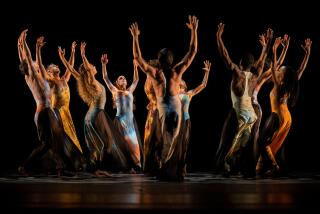Court rules Graham was an employee
In the latest development in a long and bitter legal battle, the U.S. Court of Appeals for the 2nd Circuit ruled this week that choreographer Martha Graham did not own most of the works she created and therefore could not leave them to her heir, Ron Protas.
Affirming a lower court ruling, the judgment said that Graham had assigned the dances she created before 1956 to the Martha Graham Center for Contemporary Dance -- and that she had served as an employee of the center from 1966 until her death in 1991. Thus the dances choreographed by her in the final decades of her life were work-for-hire and not her property.
However, the court remanded seven dances previously awarded to the center to the lower court to determine their ownership. Ten works remain in the public domain and seven in legal limbo, with no ownership determined thus far.
Besides raising the question of who now owns a historic body of choreography, the Graham lawsuits have left a number of American dance-makers wondering whether their own status as heads of companies could lead to rulings that they too were employees who didn’t own what they created. Previously, the dance world assumed that a company’s board of directors worked for the choreographer; with this latest decision, it seems that the choreographer works for the board.
*
Lewis Segal
More to Read
The biggest entertainment stories
Get our big stories about Hollywood, film, television, music, arts, culture and more right in your inbox as soon as they publish.
You may occasionally receive promotional content from the Los Angeles Times.










